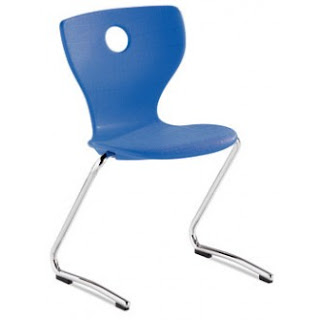Being half Danish I was brought up with a lot of modern Danish design around the home. We had sleek rise-and-fall lamps hanging over the dining table, whereas round my friends’ houses I’d encounter dreary upside-down mottled glass bowls hung on three chains from the ceiling and lit by dim bulbs. They were good for catching flies. Consequently I’m a great fan of Scandinavian design.
Incidentally, it's a widely held misconception that an Arne Jacobsen chair was immortalized in Lewis Morley’s famous 1963 photograph of Christine Keeler. The chair was in fact a 1962 ‘knock off’ design based on Jacobsen’s Model 3107 from 1957.
Christine Keeler 1963 by Lewis Morley
Left: Model 3107 by Arne Jacobsen. Right: The copy used by Morley
Panton was trained as an architectural engineer in Odense; next, he studied architecture at the Royal Danish Academy of Art in Copenhagen, graduating in 1951. During the first two years of his career, 1950-1952, he worked at the architectural practice of Arne Jacobsen, another Danish architect and furniture designer. Panton turned out to be an enfant terrible, and he started his own design and architectural office. He became well known for his innovative architectural proposals, including a collapsible house (1955), the Cardboard House and the Plastic House (1960). Near the end of the 1950s, his chair designs became more and more unconventional, with no legs or discernible back. In 1960 Panton was the designer of the very first single-form injection-moulded plastic chair - the Stacking chair or S chair, which would become his most famous and mass-produced design.
S chair
In the late 1960s and early 1970s Panton experimented with designing entire environments: radical and psychedelic interiors that were an ensemble of his curved furniture, wall upholstering, textiles and lighting. He is best known for the design of a German boats interior, now a famous museum. He is also known for a hotel in Europe that utilized circular patterns and cylindrical furniture.
Additionally, Panton is well-known for his innovative design work for Der Spiegel, a well-known German publication in Hamburg.
1955 Bachelor Chair
Relaxer Lounger
Pantofour Lupo
C1
Pantoswing Lupo
Cone chair
Wire Cone chair
Heart chair
Another view of the S chair














Tidak ada komentar:
Posting Komentar